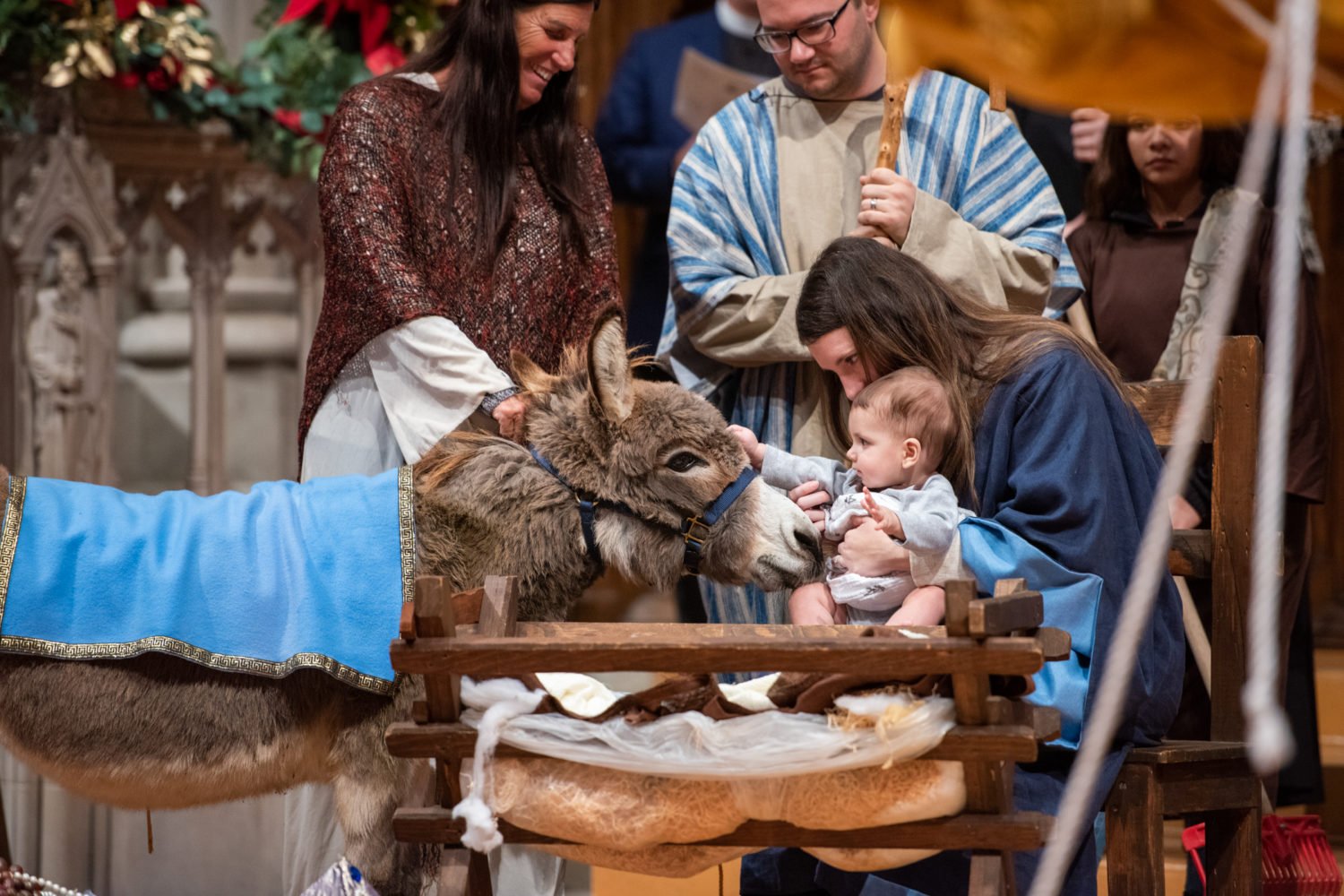The Washington National Cathedral’s 200-something stained glass windows feature an eclectic mix of iconography. You’ll find images from the Genesis story and the Book of Revelation, but you’ll also see nods to George Washington, the Battle of Iwo Jima, and the Apollo mission (the latter windows are embedded with lunar rock).
“It’s an overlay of two different stories: the Biblical story, but also the American story,” says Kevin Eckstrom, the cathedral’s chief public affairs officer. However, he says a crucial part had been largely missing from the American story: the pursuit of racial justice.
That is, until Saturday, September 23rd, when the cathedral will unveil a new set of stained glass windows. Titled “Now and Forever,” they will illuminate the “exemplary dignity of the African American struggle for justice and equality and the indelible and progressive impact it has had on American society.”
The unveiling event, which is free and open to the public, starts at 11 AM with a formal service that will include live music and remarks from the acclaimed artist behind the windows, Kerry James Marshall. Featured in Time magazine’s annual list of 100 most influential people in the world, Marshall is celebrated for his artistic representations of Black life in America.
After the dedication ceremony, the cathedral will host a daylong “community celebration,” complete with food trucks, kids activities, and music—including performances from Howard University’s 150+ member marching band. A documentary screening will outline the history behind what led up to Marshall’s windows.
The new stained glass is the culmination of a multiyear effort to replace the controversial windows that once stood in the southern face of the cathedral’s nave. Nicknamed the “Lee-Jackson” windows, the old stained glass had been donated by the United Daughters of the Confederacy and was installed in 1953. It depicted Robert E. Lee and Stonewall Jackson as well as a Confederate flag. Below the windows were stone tablets that “basically made the [Confederate generals] into Christian saints,” says Eckstrom, who recently finished a book, also titled Now and Forever, that explains the history of the windows.
It wasn’t until 2015, Eckstrom says, following the shooting at Mother Emanuel AME Church in South Carolina, that the church’s then-Dean Gary Hall called for the windows’ removal, citing them as symbols of white supremacy. The cathedral removed the Confederate flags but chose to keep the rest of the windows for at least two years as a way to prompt discussions about the role of race in American history. After the violent “Unite the Right” rally in Charlottesville in 2017, the church decided it was time to fully remove the windows.

“Their association with racial oppression, human subjugation and white supremacy does not belong in the sacred fabric of this cathedral,” wrote several church leaders at the time.
The cathedral appointed a special committee to find replacements for the windows. It approached Kerry James Marshall for ideas and advice on the project. To its surprise, Marshall offered to design them himself.
“He was the unanimous number one choice, so there was very little discussion about whether or not he should do this project,” Eckstrom says.
When the subject of the artist’s fee came up, Marshall told the committee it would cost “1865.”
“They didn’t know if that meant $18,000 or $18 million or what,” Eckstrom says. Marshall clarified: It would cost $18.65—a nod to the year the Civil War ended.
“This is a guy whose paintings routinely sell for $20 million, and he was doing it for less than twenty bucks,” Eckstrom says. “As he describes it, this was his obligation.”
Marshall had never worked with stained glass before. After creating a design, he worked with stained glass artisan Andrew Goldkuhle, whose German-American father had crafted more than 60 of the cathedral’s windows, according to Eckstrom. In his studio outside Richmond, Goldkuhle carefully cut the glass into almost 1,000 individual pieces before placing them together into Marshall’s design.
Below the new windows, a limestone tablet will feature the words of poet Elizabeth Alexander, president of the Andrew W. Mellon Foundation, who has composed a poem specifically for the installation titled, “American Song.” She will read the work at the unveiling event, then the cathedral’s on-staff stone carvers (yes, the cathedral has full-time stone carvers) will spend the next nine to 12 months chiseling Alexander’s words into limestone.
As for the old stone tablets and Lee-Jackson windows? Those have been preserved and moved to storage, away from public view, says Eckstrom. It’s not clear what their long-term future will look like, but the cathedral is open to lending them to museums. A few years ago, the National Museum of African American History and Culture included them in a temporary exhibit on Reconstruction.
As the cathedral’s current dean, the Very Rev. Randolph Marshall Hollerith, put it in a press release: “Windows that celebrated division are being replaced by windows extolling the pursuit of justice. The addition of these windows and the powerful words that accompany them allows us to tell a truer story of America, a story that confronts our past and invites all of us into a more inclusive and hopeful future.”



















